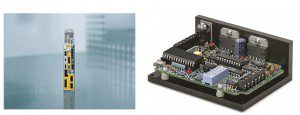
A system on a chip is an integrated circuit that contains all the components of a computer. That is everything from processors, memory and power regulation to external inputs such as USB. For stepper drives, this means one chip combines all the stepper components that are traditionally separate parts.
More specifically, the drive, indexer, computer, power supply, logic sequencer, switches and other parts of a stepper drive are now all in one place. This has the advantage of reducing power consumption and system complexity. Rather than having to worry about many interconnected components, the designer now has one chip that governs system operation.
Systems on a chip also tend to be low cost, especially compared to many components that must work together. Economies of scale also mean that it is possible to produce many drives at once if a given system requires them. They are small in form and easy to use.
Drawbacks to systems on a chip include not being able to fully customize their operation. Often, systems on a chip come prepacked by a manufacturer for a particular stepper motor or set of stepper motors. If one of the components included in the system on a chip is incompatible with a system, there is little choice but to select another system on a chip or traditional stepper design.
What’s more, if a manufacturer designs a stepper motor and system on a chip to work together, it may lock the end-user into an exclusive relationship with the one manufacturer that offers that combination. Such limitation simplies ordering, but restricts future design iterations or retrofits. The whole system may rely on one component that, if discontinued, may become unavailable or obsolete.
For systems that do not require especially unique configurations and when low cost and easy installation are a concern, a system on a chip is a good choice. For more complex applications or highly customized use cases, a system on a chip may be less suitable than off-the-shelf combinations or in-house designed drives.
For more information, read:
Article: Andrew Cunningham’s PC inside your phone
TRINAMIC Stepper controller-drive system-on-a-chip
“Stepper Drive.” Kollmorgen







Leave a Reply
You must be logged in to post a comment.